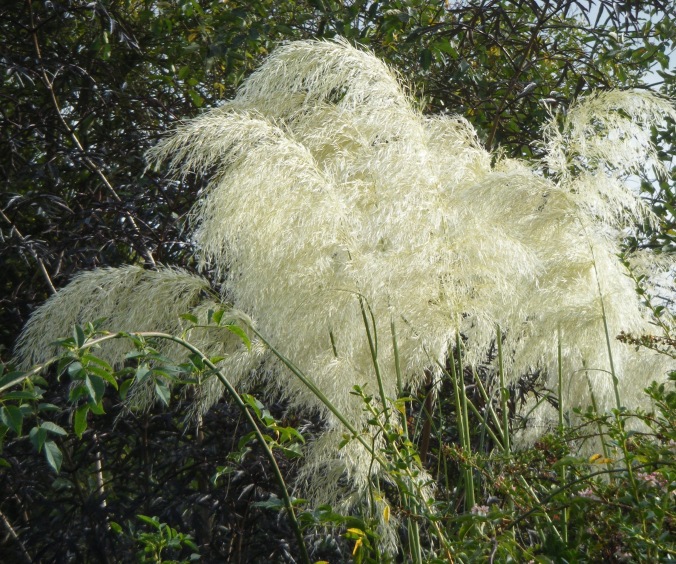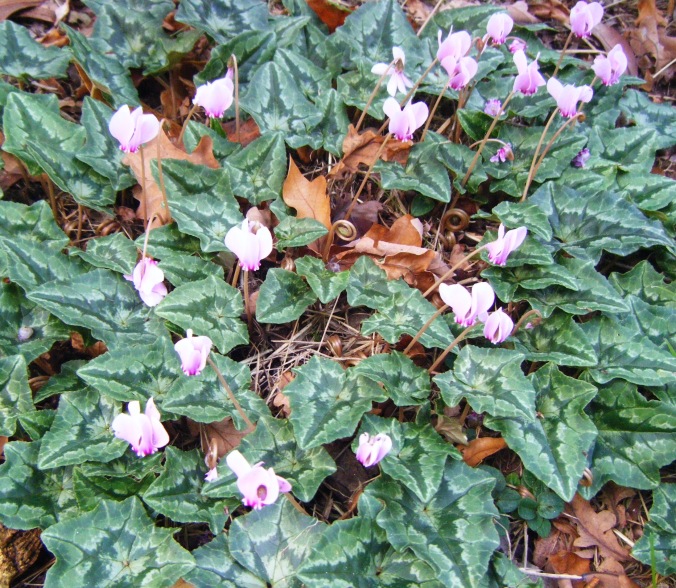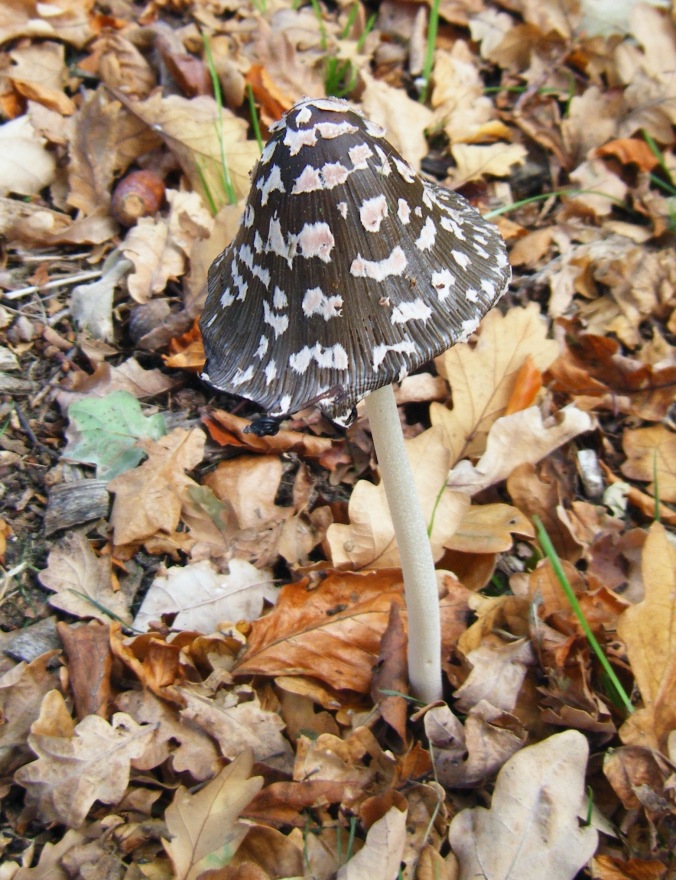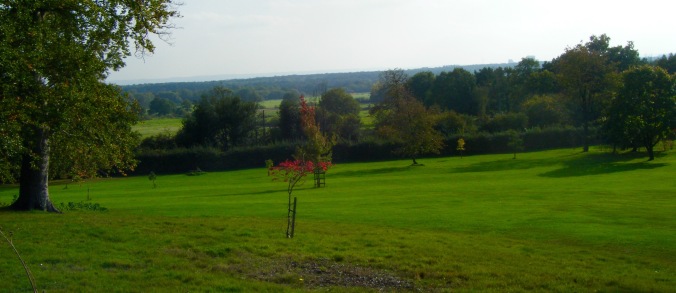I cannot draw to the end of my ‘ninety’ without including the historic rambling wooded gardens of Ramster in Surrey. It was one of the original 609 gardens that opened for the NGS back in 1927 and has opened every successive year since. It is the only other garden along with Sandringham to hold such an impressive record.
Originally named Ramsnest, the garden was created out of an Oak woodland in the 1890s by the then owner Sir Harry Waechter, a British businessman and philanthropist.

The local nursery of V. N. Gauntlett & Co Ltd., specialists in all things Japanese, conveniently adjoined the garden and their influence is very much in evidence today.

In 1922 the property was bought by Sir Henry and Lady Norman and has remained in the same family being passed onto the fourth generation in 2005. Ramster Hall tucked away in the Surrey Hills is a private home but earns its keep by hosting weddings and corporate events.

At the annual NGS conference recently Miranda Gunn (third generation) gave an amusing account of the garden. She explained how in the early years an honesty box sufficed at the entrance, but times have changed and on arrival the driver of the coach full of visitors asks three simple questions: Where are the loos, where are the teas and what is the name of the dog!
Wooden obelisks mark the entrance to the 25 acres and the map shows plenty of meandering paths to explore and helpfully outlines the hard path route giving some access to wheelchairs.

A fallen Douglas Fir Pseudotsuga menziesii, has been turned, actually chainsawed, into this porcine family by Simon Groves http://www.grovessculpture.co.uk/home.html.

Opposite, a redundant tennis court has taken on a new lease of life,

a quiet enclosed flat area where a gentle fountain plays into the dark waters of the raised pool,

with a variety of pots, and places to sit. It is a contrast to the wooded undulating 25 acres yet to come.

There is a gentle unhurried atmosphere here, a place to wander with plenty of benches along the way,

placed strategically under trees such as this deciduous conifer the Swamp Cypress Taxodium distichum,

or tucked in under what is known as the ‘Grouse Hole’. From here you can sit for awhile

and admire the ‘Gauntlett’ Cranes standing still in the green lagoon.

Seating is also made simply out of fallen trunks,

or enriched by the chainsaw of Simon Groves.

From the winged back log you can look down on the bog garden, where an acer is acquiring an autumnal glow and tall thin purple verbena bonariensis rise up in front of the fat green gunnera manicata leaves.

Logs are used on the walkway; neatly sliced, they allow the children to experience the Gunnera jungle.

Following a rough woodland path clearly marked as unsuitable for any type of wheels I reach the lake, the furthest point of the woodland. It is hard to imagine what it must have been like in those early years with something like 40 gardeners. I am reminded of the story Miranda recounted; remembering the days when a team of gardeners was employed in the fifties and false teeth were all the rage, her mother would go out into the garden calling them and have to wait a considerable amount of time while the team would rush back to their potting shed to be reunited with their teeth and so appear with a gleaming white smile!

Throughout the woodland, autumn tints are creeping in particularly amongst the acers; the large leaves of this young Acer palmatum Osakasuki, have nearly all turned,
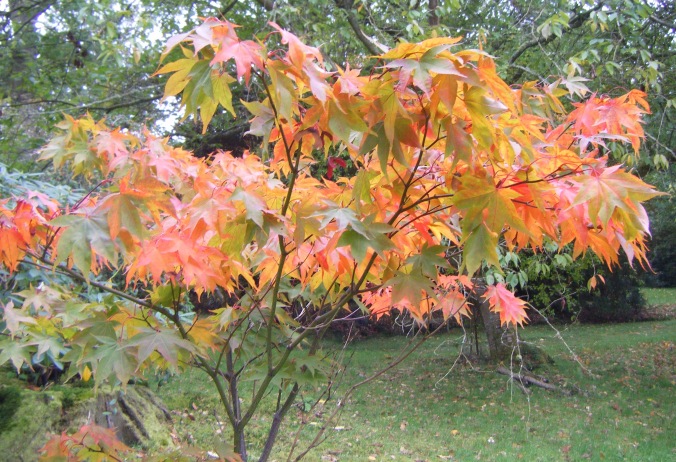
while this mature Acer rubrum ‘Scanlon’ has just a very few leaves. It amazes me how on one specimen the change is so varied, a breakaway branch so brilliantly red whilst the rest of the tree remains determinedly green.

Liquidamber styraciflua ‘Elstead’ is beautiful too, a fine tree it is also noted for its deeply ridged bark.

However it is the rare Castor aralia Kalopanax pictus var maximowicizii that wins the prize for its glorious bark, the wondrous patterns of nature.

Ramster is not only famous for its autumn colour but also for Rhododendrons and Azaleas, and many readers will have seen the wonderful display shown on Gardener’s World back in May. Not a flower to be seen now it is the naked limbs which still have such beauty; the tri-trunked specimen of Rhododendron Loder’s White.

and a frenzy of multi-stemmed Rhododendron ‘Cynthia’.

Some ‘naked’ trees are put to good use; a support for a beautifully scented honeysuckle Lonicera ‘Copper Beauty’ which flowers from June to September.

Another member of the honeysuckle family and still in flower is the Heptacodium miconioides known in N. America as Crape Myrtle or seven son flower.

There are the mighty giant trees such as the towering Sequoia giganteum Wellingtonia,

and the straight Atlantic cedar Cedrus atlantica glauca. The couple seated below are season ticket holders and share their love the garden by showing me photos of the past seasons.

It is near here in a clearing that Miranda Gunn has positioned her grandchildren.
A delightful arrangement in bronze resin titled Oranges and Lemons it is by Christine Charlesworth. Lola, Nessa, Ollie, Tom and Bethan were not an easy commission and took two years to complete, finishing in 2011. There is such rhythm and movement in this piece that it is no wonder that Charlesworth was selected as the official artist for the 2012 London Olympics.
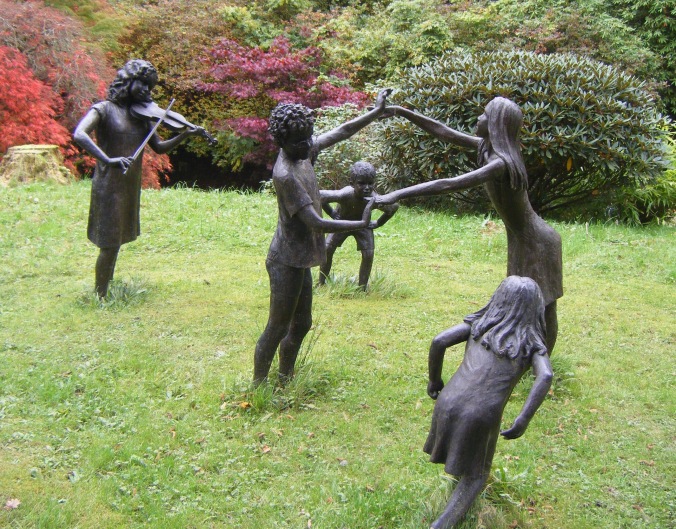
Behind the group of figures is the glow of a red Acer, contorted with colour,

it is part of the Acer walk, the Japanese influence incorporated a century ago.

A lantern is poetically placed amongst shrubs and contributes to the Anglo/Japanese feel.

I meander for sometime past lakes and ponds,

down steps and over bridges; it is a fun place for children to explore.

Returning to the car park I pass under the deliciously-looking but inedible baubles of the Dogwood Cornus porlock ‘Norman Haddon’,

and then quite out of the blue, and it is out of the blue because everything is red, is a lonely hydrangea, a reminder of the acid soil that lies below and I envy hugely.

Back in the car park the peculiar fruits of the Medlar Mespilus germanica are yet to blet,

and a Red London Bus awaits the next party of wedding guests.

Ramster is closed now until the Spring; its very informative website boasts of it providing the best cake in Surrey. I should check it out when it opens for the NGS on Friday 11th May 2018.
——-86——-





